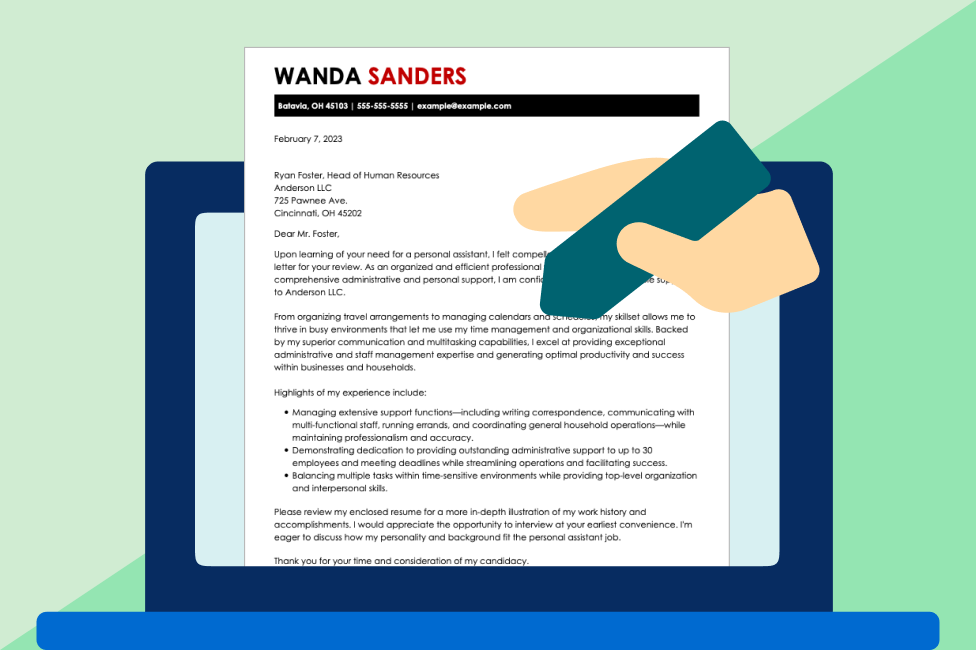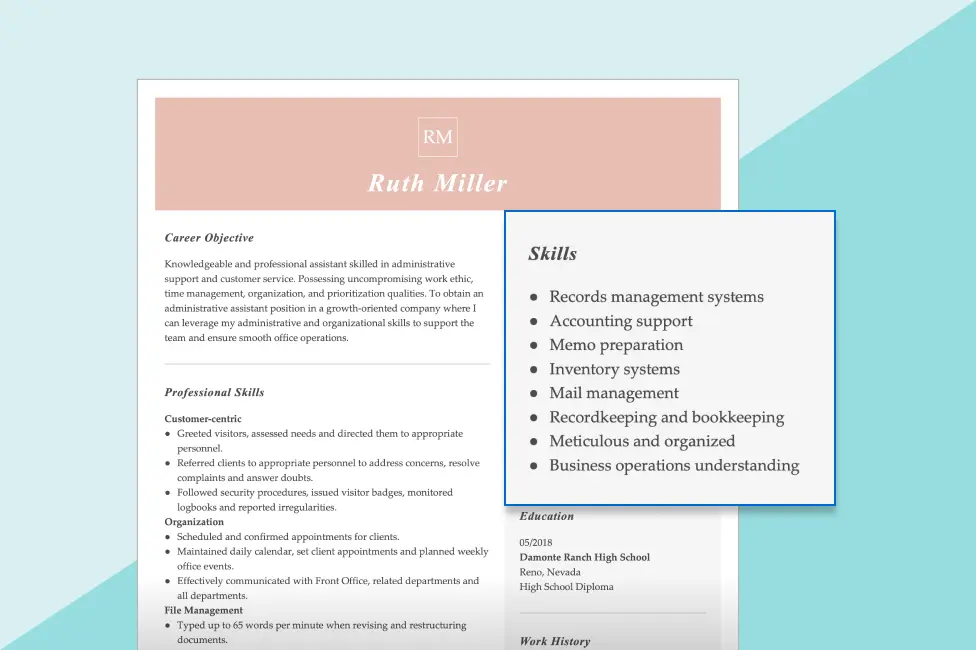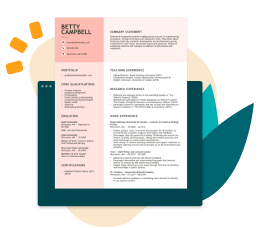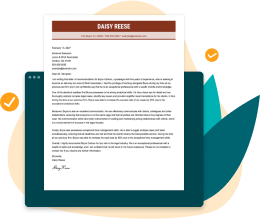Don’t Get Ghosted: How to Follow Up On a Job Application
With more job seekers calling out employers for posting jobs and then ghosting applicants, it's important to follow up professionally while also protecting your time and peace of mind.
You spend hours tailoring your resume, crafting a thoughtful cover letter, and hitting "submit," but you never hear anything back from employers, leaving you wondering how to follow up on a job application. Frustrating, right?
Unfortunately, this scenario is becoming more common as ghost job postings flood online job boards. While you can’t control this increasingly popular practice, you can follow up professionally after a job application to protect your time.
In this guide, we’ll show you how to spot possible ghost jobs, when and how to follow up after applying, and what to do if you're met with silence.
When and How to Follow Up On a Job Application
If you submit a job application and you feel like the employer is taking too long to get back to you, you should consider a professional follow-up.
When to follow up after a job application
As a general rule, you should expect to wait up to two weeks after submitting your application before you receive a personal response from the hiring committee. If two weeks have passed with absolutely no communication, you can send a polite follow-up email.
A follow-up email will show initiative and genuine interest from your part if the employer is legitimate. If you still don’t hear back, it’s likely the role wasn’t actively being filled. At that point, it’s best to move on and focus your energy on opportunities that show real potential.
Whom to follow up with after a job application
You should direct your follow-up email to your target company’s recruiter or hiring manager. Although it’s not always common to see the recruiter’s name on the job ad, you should easily find their contact information after a quick search on LinkedIn or the company website (if not, that’s a ghost job red flag!).
Use respectful, professional language when crafting your follow-up message for a job application. You don’t want to seem entitled or that you’re rushing the hiring process. A polite, curious tone is perfectly acceptable.
What to say in a follow-up email
When following up after a job application, your message should be brief and straightforward. Introduce yourself to the recruiter and state the role you’ve applied for and the date you applied. Politely ask if they received the job application and what you can expect from the hiring process timeline. Wrap up with a thank you.
Here’s an example of a professional follow-up email you can copy and paste to use during your job search.
Email body:
Hi [Hiring Manager’s Name],
I hope you're doing well. I recently applied for the [Job Title] position at [Company Name] and wanted to follow up to express my continued interest in the opportunity. I’d be excited to contribute my [mention a relevant skill or experience] to your team.
Please let me know if there’s any additional information I can provide. I look forward to the possibility of connecting.
Best regards,
[Your Name]
[Your LinkedIn profile (optional)]
[Your contact information]
PRO TIP
What Are Ghost Jobs and How to Spot Them
The rise of ghost job postings has made it harder to tell which applications are worth your time.
Sometimes ghost jobs are job advertisements that the human resources team has simply forgotten to close. However, a majority of HR managers admit to posting ghost jobs intentionally to collect resumes and keep a steady talent pipeline going.
As a job seeker, you need to learn how to follow up with employers strategically, not only to express interest in the role, but also to gauge whether the opportunity is real.
Tips for spotting ghost jobs
As you navigate the job search process, these are some tips you should keep in mind to spot potential ghost job postings.
- Look for signs of an active, transparent hiring process.
Legitimate job postings often include a hiring timeline, clear next steps, or contact information for a recruiter or hiring manager. If you don’t see any of this information, that’s a big red flag that you may be dealing with a ghost job. - Be wary of generic or vague job descriptions.
If the posting reads like it could apply to any company or doesn’t mention specific responsibilities, team structure, or goals, it may be a placeholder rather than an active opening. - Watch for repeatedly posted roles.
If the same job keeps showing up over weeks or months with no visible updates, it could be part of a resume collection strategy. Use job boards that let you track posting history to spot any suspicious patterns.
In other cases, overly strict ATS filters force companies to repost jobs because recruiters may overlook qualified candidates who miss certain keywords. To tackle a picky ATS, optimize your resume with the tips and templates in our ATS resume guide. - Check for recent employee activity on LinkedIn.
If the company has recently hired for the role you’re eyeing, or if you see no internal engagement (no likes or comments on the job post from company employees), that may be a clue that the listing is outdated. - Verify the listing on the company’s own website.
If you find the job only on third-party sites but not on the company’s careers page, it might not be real, or it's long expired. - Look for feedback from other candidates.
Use sites like Glassdoor, Reddit, or LinkedIn to see if other job seekers have experienced ghosting or issues with that company’s hiring process. - Test for responsiveness.
A lack of even an automated confirmation email after applying is a red flag. While not all companies follow up with applicants personally, most legitimate postings will trigger a basic acknowledgment that your application was received. - Don’t ignore your gut feeling.
If the listing feels “off,” is poorly written, or seems too good to be true (like offering high pay with minimal requirements), it probably deserves a second look or, better yet, a pass.
What to Do If You Suspect You Applied to a Ghost Job
If you’ve realized you applied to a ghost job, the best thing you can do is move on to job opportunities that are legitimate. Unfortunately, ghost jobs can pose a security threat to individuals if posted with malicious intent.
Some criminals use ghost jobs to scam people for their funds or to collect valuable data they can misuse or sell forward—think your email, social media accounts and activity, social security numbers (SSN), or even bank account information.
Here are some steps you can take if you’ve applied to a ghost job:
- Verify if your email address has been compromised in a data breach scam. Check your email in trusted data protection services like Norton, Microsoft Defender, or Avast. Although it’s hard to change your email, at least change your password and enable two-factor authentication for additional security.
- Don’t pay upfront fees from supposed employers. If you suspect you’ve applied to a fraudulent job posting, trust your instinct and don’t send any funds. No legitimate employer will ask you for money.
- Report suspicious job postings to the authorities. The Federal Trade Commission is responsible for protecting consumers and individuals from scams, and they have a fraud submission portal that makes it easy to report them. The Internet Crime Complaint Center is an FBI-led agency where you can also report ghost job scams.
- Protect your SSN from job scams. Although employers will need your social security number for tax reporting purposes, you should never share it before signing a binding employment contract. If a job posting requires you to submit your SSN, it’s highly likely that it is a scam. If you’ve submitted your SSN, report it to FTC.gov or the Social Security Administration.
Ghost jobs are yet another obstacle for job seekers in an already competitive job market. However, instead of getting discouraged, empower yourself with the knowledge and resources available to protect yourself.
The job search process can be time-consuming and high-effort, but with the right game plan in place, you can find a job that fulfills you and gives you the financial security you need to thrive in life.
Ready to take your job search to the next level? Get started by writing a resume that showcases your strengths and meets the employer’s requirements. Simply type in your desired job title and years of experience, and let our Resume Builder do its magic. You’ll get a custom resume in mere minutes!
Key Takeaways
- Ghost job postings are real and increasingly common. Many employers either forget to remove job ads or intentionally leave them up to collect resumes for future openings.
- Learn to spot the red flags. Vague job descriptions, missing contact info, lack of application updates, and repeated postings can signal ghost listings. Always verify listings on the company’s official site and watch for engagement from recruiters.
- Following up shows initiative and helps you filter real jobs from fake ones. Wait about two weeks before following up. Keep your message short, polite, and professional, and direct your email to a hiring manager or recruiter.
- Don’t dwell if you’ve been ghosted; move forward strategically. If you suspect a posting was fake, focus on legitimate opportunities. Be cautious of scams asking for sensitive info or money.
- Protect yourself from fraudulent postings. Never share your social security number or bank info early in the hiring process. Use two-factor authentication on your accounts and report suspicious job ads to the FTC or Internet Crime Complaint Center.
- Stay hopeful, not discouraged. Ghost jobs are frustrating, but your effort is not wasted. By learning how to follow up on a job application and spot ghost jobs, you’ll be ready when real opportunities appear.
Frequently Asked Questions
Should I still apply for jobs if I suspect they might be ghost listings?
You can, if you’re still on the fence about the job’s legitimacy. However, proceed with caution and protect yourself. Maybe use a separate email account you only utilize for job applications, and don’t share private personal information. Manage your expectations and prioritize roles that show signs of active hiring like recent employee engagement or recruiter contact info.
How many times should I follow up after applying for a job?
Once is usually enough. If you don’t hear back after your initial follow-up, it’s okay to check in one more time, ideally after an additional week. Beyond that, it’s best to focus on other opportunities.
Is it ever OK to call a company after applying?
Yes, you may call a company after applying if the job posting encourages phone inquiries or if you’ve already had some contact with the recruiter. Otherwise, email is the more professional and respectful route.
Can networking help me avoid ghost job postings?
Absolutely. Networking with current or former employees, hiring managers, or recruiters can give you insider info on which openings are real and actively hiring. Networking is one of the most effective ways to land an interview because you’re getting referred by someone connected to the company and they’re sharing opportunities that are compatible with your qualifications.
What’s the best way to track my applications and follow-ups?
Use a simple spreadsheet or job tracker tool to log the job title, company, date applied, follow-up status, and any recruiter contact details. Keeping track of your job applications helps you stay organized and avoid redundant outreach.
How can I tell if an employer is ghosting me or just taking a long time?
If it’s been over two weeks with no response, even after you’ve followed up, it may be a sign you’ve been ghosted. But during peak hiring seasons, delays are common. Look for communication cues like automated replies or recruiter updates.
What should I do if I keep getting ghosted by multiple employers?
If you’re getting ghosted by recruiters, consider updating your resume, tailoring it more closely to each job, or networking more actively. Ghosting isn’t always personal, but if it’s happening often, it may be worth adjusting your job search strategy.











